THE BAYS OF SAN FRANCISCO
BECOME A 400,000-ACRE ESTUARIAL LAGOON WHEN THE OCEANS RISE ABOUT 3 METERS.
As ocean waters rise and storm surges happen, the probability is that, prior to stabilization, storm surges will force the waters from the Bays out into the desert toward Stockton to the West, and Sacramento to the East. The probability is that the waters from the storm surges will remain in place, forming saline lakes, sometimes as deep as 4 or 5 meters. For the purposes of this investigation and work of Art, we pose a limit to the ocean rise of about 3 meters, which generates the vast estuarial lagoon this proposal suggests.
We choose the 3-meter mark somewhat arbitrarily. The lowest prediction of water rise over the next 100 years is approximately 1m, the largest, approximately 5m. We choose the 3-meter mark as the most probable. We also note that climatological research suggests a 6-7 degree F. temperature rise in that region.
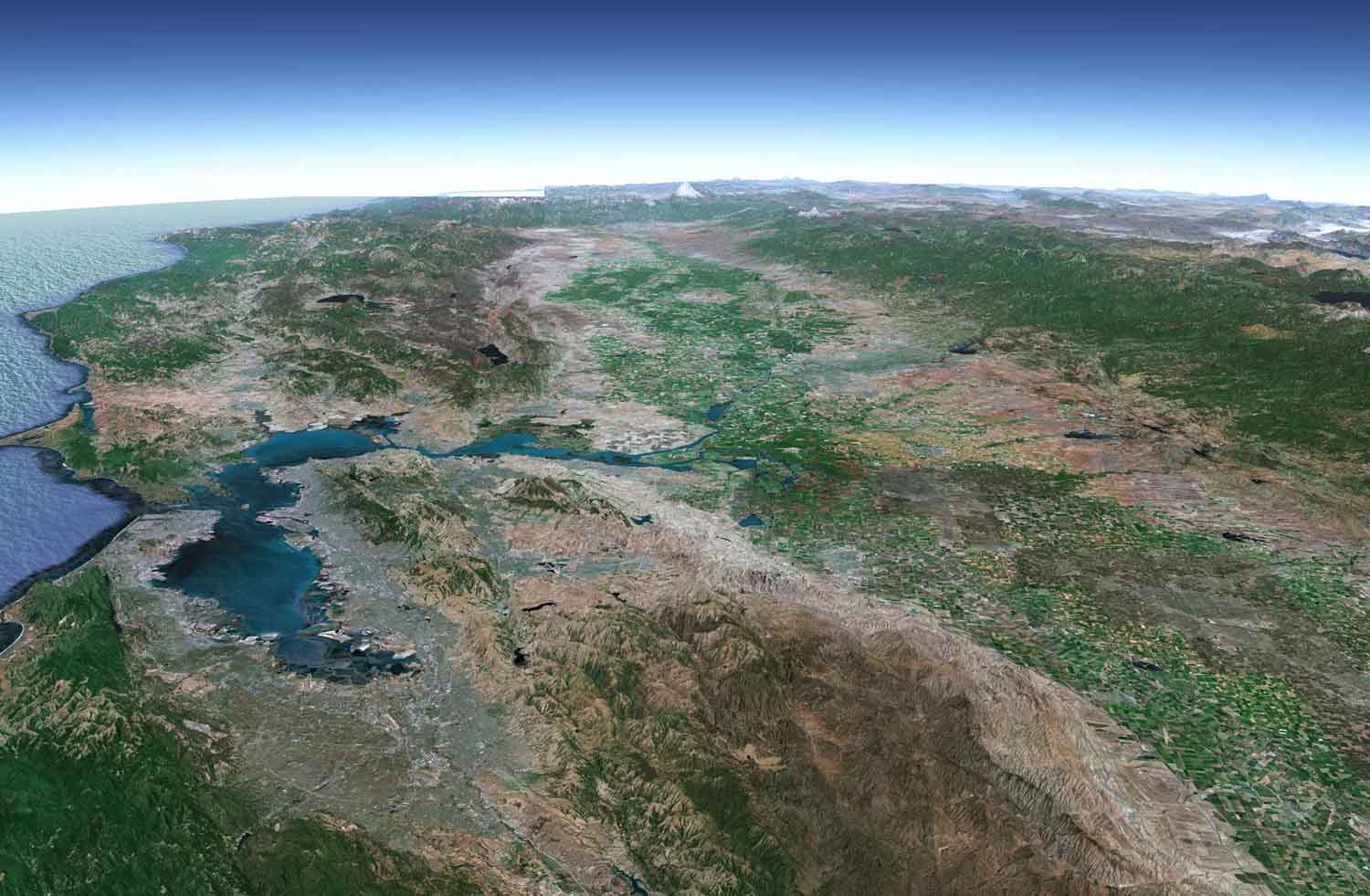
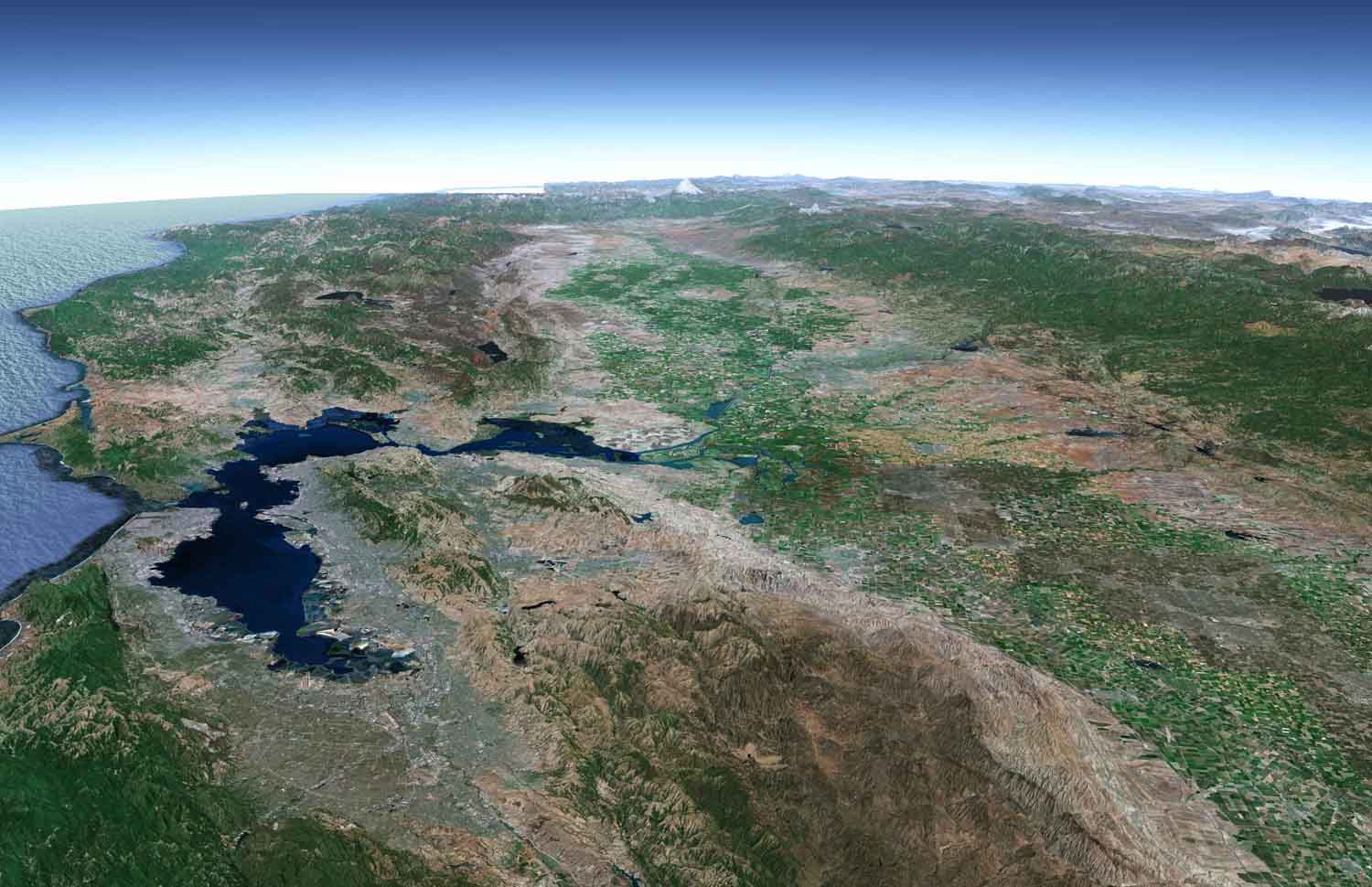
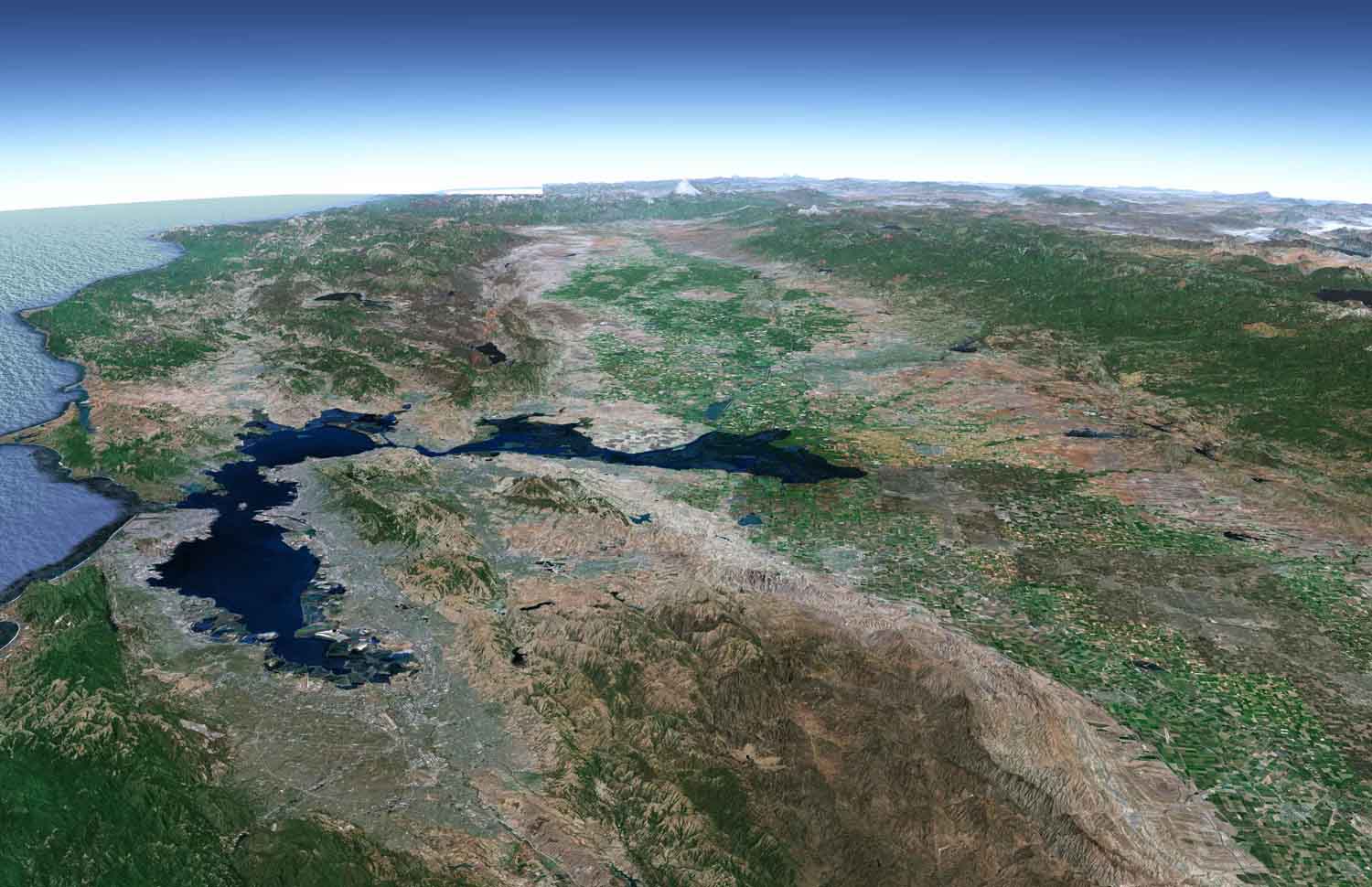
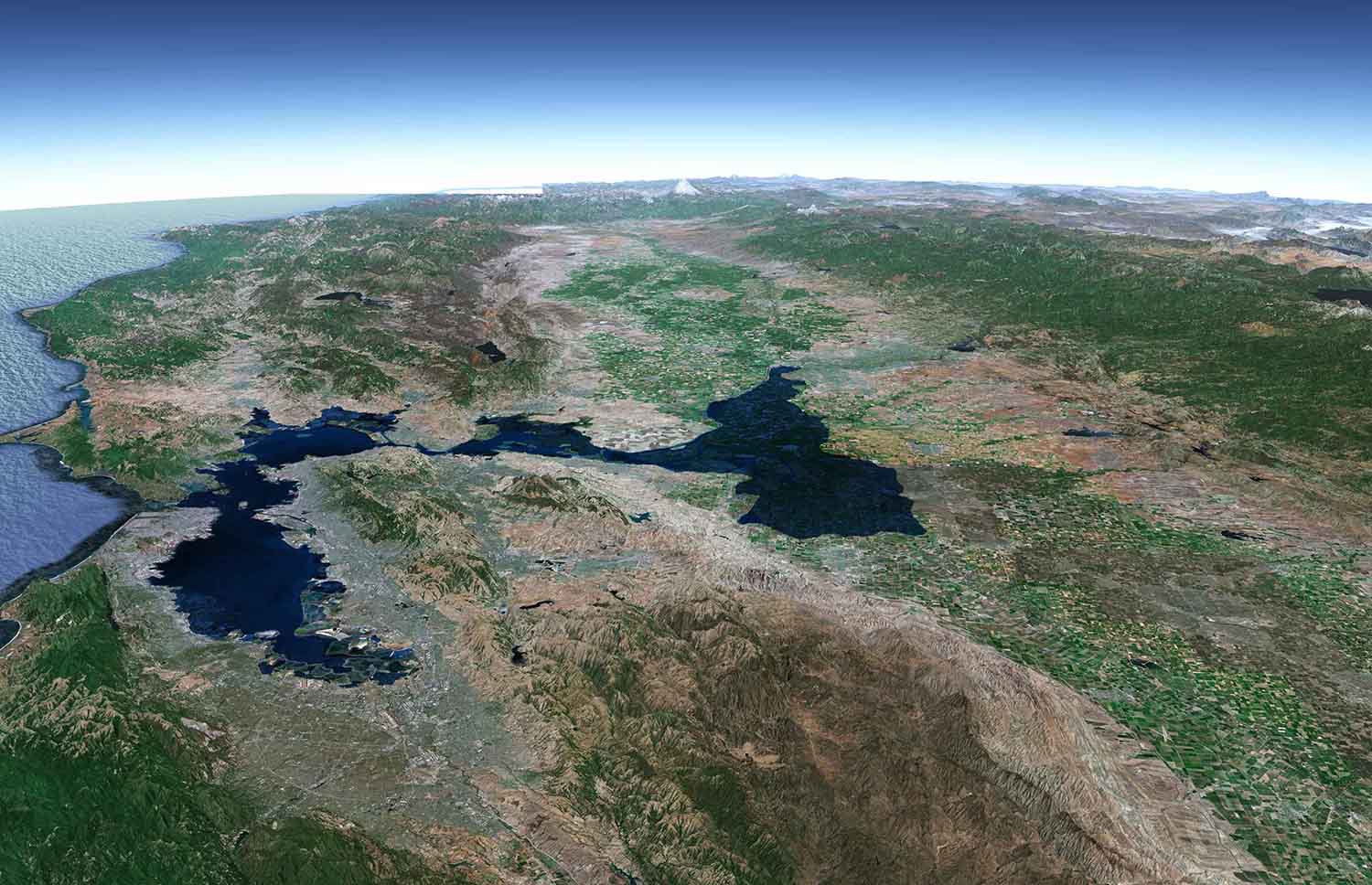

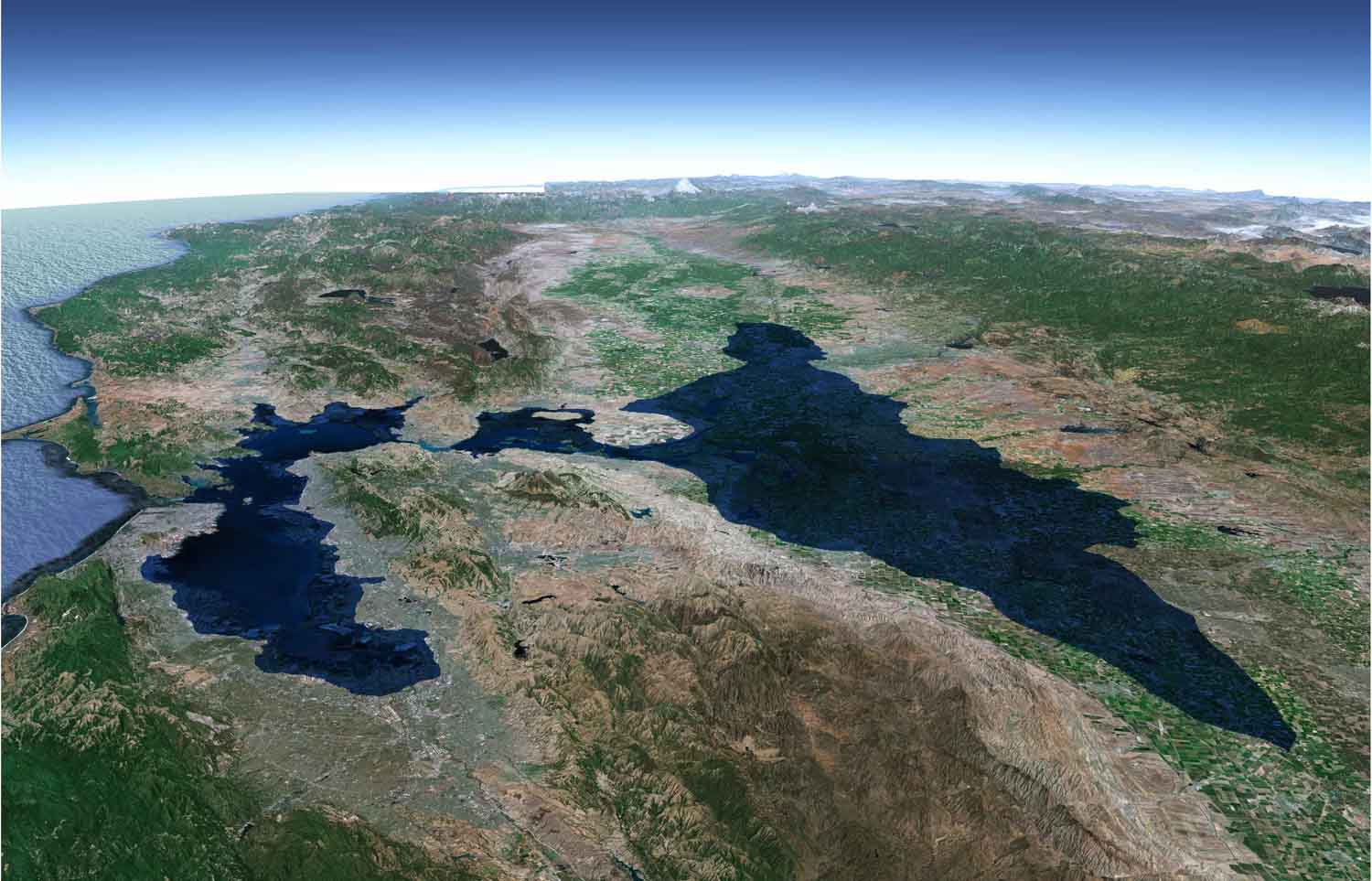
The likelihood is that carbon in the atmosphere will reach much higher levels, perhaps over 600 parts per million, and the global temperature will rise above the 2° C. that signals ecological danger.
Therefore, this work argues that conceiving and planning for adaptation at scale is a virtual efficiency that needs to be enacted in the now. The virtual efficiency we suggest would be in initiating the coping processes, well prior to extreme future need.
In an estuarial lagoon, it is the mixing of fresh and salt waters that creates the particular and productive ecosystem. We therefore propose a planning group that will first analyze the terrain and then begin to come to an understanding of the species that would move there from warmer parts of the Pacific if they could. Also such a group would be tasked with the design and framing of the planning and research necessary to do this work. Particularly important is to come to an understanding of whether and how to assist the migration of species that would permit a future healthy, vibrant and productive estuarial lagoon to come into being. This work would require serious paleo-ecological research to find out which species lived there when the salt waters were present in the central valley and when the temperatures were, on average and as predicted, 7 degrees F. higher. This form of research is of great value in shedding light on what a new ecosystem might both look and behave like.
Moreover, it is our intention to locate, on the Pacific shores, possibly in Mexico or below, what we have come to think of as a “Mother Lagoon.” That is, an estuarial lagoon that has a presence in a desert, fed by mountain streams at temperatures as high or higher than the Central Valley. We believe studying the ecology that exists in such a lagoon will, like studying the Eemian, shed light on how we might assist Nature in bringing forth a viable estuarine ecosystem in the Central Valley.
For instance, from an economic perspective, a 400,000-acre estuarial lagoon will produce approximately 2,000 pounds per acre when it becomes a low-intensity aquasystem. In this case we are looking at a production of 800 million pounds, wet weight, yearly. The requirement here is that those that harvest the system maintain the system, thus the top predetor and the top conservator are one.
